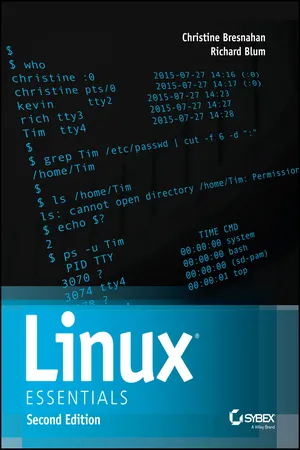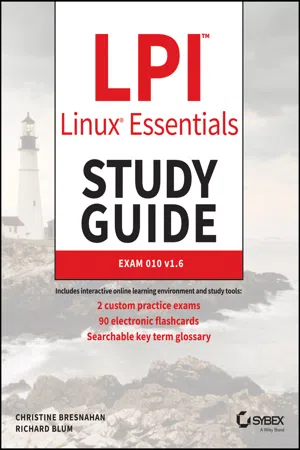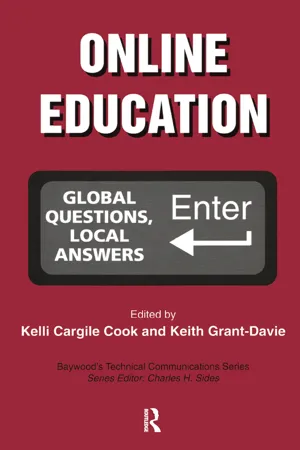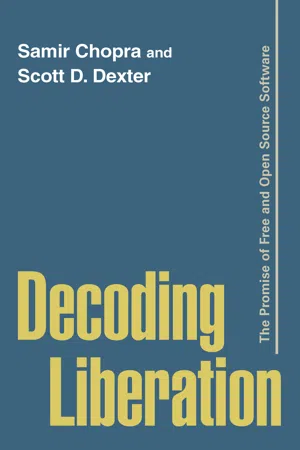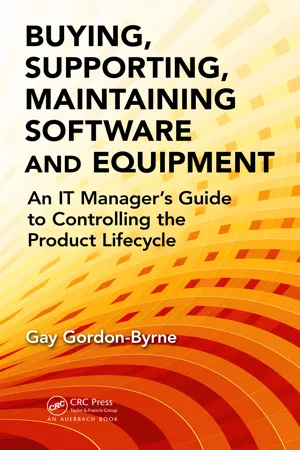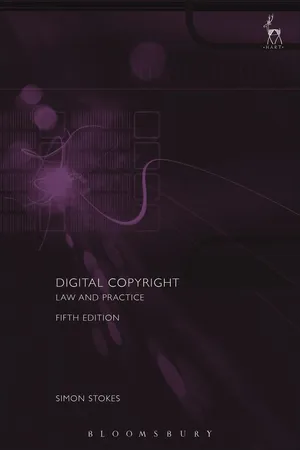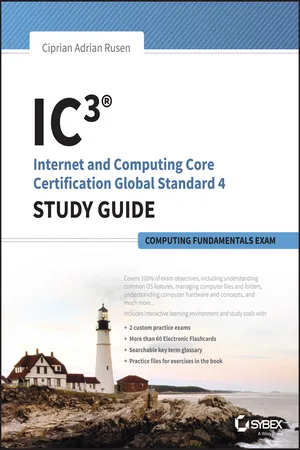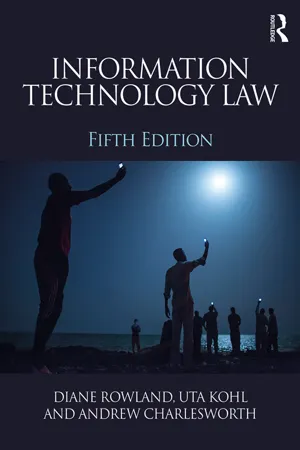Computer Science
Software Licensing
Software licensing refers to the legal agreement between the software developer and the end user, outlining the terms and conditions for using the software. It specifies the rights and restrictions associated with the software, such as the number of installations, usage limitations, and support services. Different types of licenses, such as proprietary, open source, and freeware, offer varying levels of access and control.
Written by Perlego with AI-assistance
Related key terms
Related key terms
1 of 4
Related key terms
1 of 3
10 Key excerpts on "Software Licensing"
- eBook - ePub
- Christine Bresnahan, Richard Blum(Authors)
- 2015(Publication Date)
- Sybex(Publisher)
CHAPTER 2 Understanding Software LicensingSoftware is a type of intellectual property that is governed by copyright laws and, in some countries, patent laws. As a general rule, this makes it illegal to copy software unless you’re the software’s author. Open source software, however, relies on licenses, which are documents that alter the terms under which the software is released. As described in this chapter, open source licenses grant additional rights to software users.In general, open source software owes a great deal to three organizations: the Free Software Foundation (FSF), the Open Source Initiative (OSI), and the Creative Commons (CC). Each organization has a distinct philosophy and role to play in the open source world. There are also numerous specific open source licenses, which are summarized at the end of this chapter, along with ways that businesses can use them.- Investigating software licenses
- The Free Software Foundation
- The Open Source Initiative
- The Creative Commons
- Using open source licenses
Investigating Software Licenses
Copyright law has existed for centuries and, as such, it wasn’t designed with software in mind. Nonetheless, copyright law does apply to software. Licenses that authors apply to their software interact with copyright law to create the specific rights that you have—and don’t have—to use, modify, and redistribute software. Thus you need to understand the basic principles, as well as the differences, between proprietary and open source license terms.Exploring Copyright Protection and Software
A copyright - eBook - ePub
LPI Linux Essentials Study Guide
Exam 010 v1.6
- Christine Bresnahan, Richard Blum(Authors)
- 2020(Publication Date)
- Sybex(Publisher)
CHAPTER 2 Understanding Software Licensing Objective: 1.3 Open Source Software and Licensing Software is a type of intellectual property that is governed by copyright laws and, in some countries, patent laws. As a general rule, this makes it illegal to copy software unless you’re the software’s author. Open source software, however, relies on licenses, which are documents that alter the terms under which the software is released. As described in this chapter, open source licenses grant additional rights to software users. In general, open source software owes a great deal to three organizations: the Free Software Foundation (FSF), the Open Source Initiative (OSI), and the Creative Commons (CC). Each organization has a distinct philosophy and role to play in the open source world. There are also numerous specific open source licenses, which are summarized at the end of this chapter, along with ways that businesses can use them. Investigating Software Licenses Copyright law has existed for centuries, and as such, it wasn’t designed with software in mind. Nonetheless, copyright law does apply to software. Licenses that authors apply to their software interact with copyright law to create the specific rights that you have—and don’t have—to use, modify, and redistribute software. Thus you need to understand the basic principles, as well as the differences, between proprietary and open source license terms. Exploring Copyright Protection and Software A copyright is, as the name implies, a legally recognized right to create a copy of something. In most countries, if you write a book, take a photograph, or create a computer program, you (and you alone) have the right to make copies of that book, photograph, or computer program - eBook - ePub
- Nikki Cordell, Sam De Silva, Sara Ellacott, Victoria Hordern, Stewart James, Andrew Katz, Andy Lucas, Jennifer Pierce, Stuart Smith, Jeremy Holt, Jeremy Newton(Authors)
- 2020(Publication Date)
- BCS, The Chartered Institute for IT(Publisher)
Access to the source code is a precondition for this. The OSI has developed its own more descriptive criteria, which can be found in The Open Source Definition (Open Source Initiative 2007). The OSI was established some years after the formation of the FSF, with a view to making free software more business friendly. The restrictive rights of use in traditional contracts and associated licence fees are often perceived, from an enterprise computing perspective, as major obstacles to exploitation, innovation and growth (MacDonald 2014). In practice, the respective definitions of open source and free software have very similar effects and, although they can generate lively debate, the differences rarely cause a problem from a legal or business point of view. The word ‘free’ in ‘free software’ relates to ‘freedom’, as in the freedoms described above, as opposed to ‘zero-price’ – think ‘free speech’ rather than ‘free beer’. (As it happens, free software is frequently zero-price as well, but this is not an essential feature of the concept.) The terms ‘FOSS’ (free and open source software) and ‘FLOSS’ (free, libre and open source software) are also occasionally used in order to avoid alignment with either the open source or free software camps. These freedoms (whether FSF or OSI) are guaranteed through the legal mechanism of licensing. The legal context Computer software is protected in the UK mainly by the law of copyright (see Chapter 4). In addition, it can attract protection of other intellectual property rights, such as patents or trade secrets. Open source software is no different from proprietary software in this regard. Use and reproduction of software without a licence is generally an infringement of copyright, and open source licences, in common with proprietary software licences, grant certain permissions to use the software so that, by complying with the conditions attached to those permissions, the user is no longer in breach of copyright - eBook - ePub
Inside the World of Computing
Technologies, Uses, Challenges
- Jean-Loic Delhaye(Author)
- 2021(Publication Date)
- Wiley-ISTE(Publisher)
However, it is not easy to tell the difference between free software and open source. According to Richard Stallman, the fundamental difference between the two concepts lies in their philosophy: “Open source is a development methodology; free software is a social movement.” In practice, most open-source licenses meet the FSF’s criteria for open-source software, with the various subtleties that distinguish them being mainly philosophical and commercial.There are many free or open-source licenses. The most widely used license is the GNU GPL (General Public License). Many free or open-source licenses are close to each other; some are compatible with each other, others have real philosophical differences. In particular, some licenses have a “contaminating” effect. For example, if a developer integrates a programming library published under GPL version 2, he or she must publish his or her software under the same license, and therefore publish his or her sources. Hence, the importance of reading the license that comes with the software!3.8. The software market
Software represents a considerable market both economically and in terms of jobs. Here are a few figures to better measure the importance of this sector.According to Gartner Inc., global corporate spending on software was $419 billion in 2018. These expenditures included licenses acquired from software publishers (companies that design, develop and market software products) and development done in-house or outsourced to DSCs (Digital Services Companies). The United States largely dominates these activities, with IBM and Microsoft being the top two producers.Cloud computing (Software as a Service) is disrupting the world of software publishers as more and more companies are renting software services on the Cloud instead of purchasing expensive licenses. The revenue associated with these services is estimated to account for around 10% of global software spending.Note that the open-source market is in very good health according to ReportBuyer. Its worldwide revenues are expected to increase from $11.40 billion in 2017 to $32.95 billion in 2022, an average annual growth rate of 23.65%. - eBook - ePub
Online Education
Global Questions, Local Answers
- Kelli Cargile Cook, Keith Grant-Davis(Authors)
- 2020(Publication Date)
- Routledge(Publisher)
A software program’s source code is the foundational language that creates the software. Restricting access to source codes has been the primary way in which software developers are rewarded for their innovations and how software companies control product development and distribution. For example, when customers purchase proprietary software, they are only purchasing the ability to use that software. Customers are unable to modify or fix the software at a source code level since the code is restricted from viewing. However, open source software inverts this practice by freely distributing the source code to users, competitors, and other developers. This means that a different set of intellectual property rights, patents, and copyrights apply to the software and the process of software development.The Open Source Initiative (OSI) is a non-profit corporation that manages and promotes the Open Source Definition and certifies software to be “open source” through its “Certified Open Source Software certification mark and program” [22 ]. The definition of “Open Source” has nine features. We include them here in summary form but encourage readers to view the definition in full at the following location, Open Source Definition (http://www.opensource.org/docs/definition.html ):1. Free redistribution. OSS licenses cannot restrict people from selling or giving away the software. This applies to pieces of the software that may be bundled within other programs.2. Source code. However, any redistribution of the software must include the source code so that others may freely adapt, change, and potentially redistribute (“evolve”) the software.3. Derived works. The license must allow users to modify the software and create their own derivatives. These modifications and derivatives must be allowed to be redistributed under the same terms as the original software.4. Integrity of the author’s source code - eBook - ePub
Decoding Liberation
The Promise of Free and Open Source Software
- Samir Chopra, Scott D. Dexter(Authors)
- 2008(Publication Date)
- Routledge(Publisher)
During the CONTU hearings of 1978 it had become clear that the computing industry wanted to be able to apply both copyright and trade secret law to software. For distributors of proprietary software to come under the purview of trade secret law, they must demonstrate efforts to protect the confidentiality of their trade secrets. This is achieved by employing both nondisclosure agreements, which are signed by programmers and prohibit disclosing any details of a particular software project, and license agreements for users, which block copying and sharing of executables. Using trade secret law to deny access to source code denies access to that part of the creators’ innovation that could be the focus of public scrutiny and criticism.Proprietary software poses another fundamental problem for computer science. Computer science is the first physical science whose experimental apparatus and knowledge is substantially nonrival. The practice of physics and chemistry depends on the use of goods ranging from glass flasks to mass spectrometers to particle accelerators. While computer science employs goods such as computer workstations and incorporates subfields that study only hardware, its experiments and experimental apparatus are the programs employed by computer scientists. If running programs are part of the experimental infrastructure, then restrictions on copying executables are constraints on the propagation of scientific knowledge. Physicists may be unable to duplicate their colleagues’ laboratory configuration easily, but this limitation is fundamentally a material one. In computer science, the constraints are not logistic or physical but legal and economic.In sum, the application of proprietary notions to software suffers from systemic incoherence. Not only are these ideas damaging to the current practice of science, they, like all ideologies, function to preserve their own power and to counteract any reformatory imperative. Current applications of patent law pose a clear threat to FOSS, which by its practice and accompanying philosophy not only opposes proprietary software but is able to provide a coherent alternative through its creative licensing policies. This potential is countered by the threat of punitive action: the Linux kernel, for example, is known to be vulnerable to patent litigation, as is any other large FOSS project.3 - eBook - ePub
Buying, Supporting, Maintaining Software and Equipment
An IT Manager's Guide to Controlling the Product Lifecycle
- Gay Gordon-Byrne(Author)
- 2014(Publication Date)
- Auerbach Publications(Publisher)
Hardware designs that incorporate multiprocessors and multicore processors are challenging from a license pricing perspective. Many users discover late in the purchase process that their choice of a new processor has catapulted them into a new category of license fee for some element of their software stack. Even if the basic OS may be favorably licensed, third-party systems software products do not have to follow suit.Software maintenance of all OS and systems software products is always the domain of the provider. There are no legal options to acquire software service of proprietary products. Open domain versions of some old operating systems are available and can be serviced independently. Open systems/open domain products such as Linux are extremely attractive as alternatives to proprietary OS primarily to control the ongoing costs of software support.Usage-Based Licensing Models
Application systems licenses are commonly priced according to the number of users (seats) and not just a single license covering all instances. Variations include licensing the number of concurrent users, such as with products used intermittently across a network or enterprise-wide licenses where a particularly large end user can offer a consistent block of revenue in exchange for less license management.Identifying and validating all the instances of the per seat or per instance contract is far more complicated than for licenses by serial number or even when tied to processing usage. Application vendors offering these options are wary about enforcement. It is common in these types of license agreements for vendors to require users to allow access to records of usage, login credentials, and any other tools that might be available to help validate usage. These same vendors are usually more aggressive in requiring audits. This is not surprising since the history of such licensing models has proven high levels of license misuse on the part of users.Maintenance and defect support for applications is the unique responsibility of the product developer. There is nothing done at the repair level that impacts applications, as the hardware must operate before the operating system and the OS operates correctly before the application. - eBook - ePub
Digital Copyright
Law and Practice
- Simon Stokes(Author)
- 2019(Publication Date)
- Hart Publishing(Publisher)
Copyright: computer programs (object code) and their preparatory design materials (source code, etc) are defined as literary works under section 3, Copyright, Designs and Patents Act 1988 (CDPA)). User manuals and software licences in printed or electronic form will also be protected by copyright and possibly database right in certain cases. This reflects the provisions of the Software Directive which are key in this regard.(b) Rights in confidential information: the high level code generally used to write software (source code) is typically kept confidential – only the object code, the machine readable instructions in binary format (01010 etc), and related user manuals and licences, are distributed to users.(c) Patents: software which has a ‘technical effect’, for example, it enhances PC memory capacity or operates or controls a technical process, and is otherwise novel and inventive can be patented.3(d) Designs/topography right: for semi-conductor products.4 As noted in chapter one , these rights are outside the scope of this book.(e) Registered designs/trademarks: following case law and revisions to the Registered Designs Act 1949, to take account of EU legislation, it appears that computer icons, software fonts and on-screen displays are eligible for registered design protection on the basis they are ‘graphic symbols’.5 Trademark protection may also be available.(f) Contract/Software Licensing: because software needs to be copied in order to run and be used it is distinct from other literary works such as a book (which need not be copied in order to be read). Software owners will typically prescribe by way of a copyright licence (a contract) what rights users have to copy/reproduce, transfer and modify the software and for what purposes. It is desirable to clarify what use rights a user has, as from a licensor’s perspective a licence ‘to use’ software will potentially be given a broad interpretation.6 Licensors do not have complete freedom of contract here; in addition to consumer protection legislation (if relevant), licensors must have regard to Competition Law (see chapter five ) and European law (the Software Directive – see below). Software Licensing is given further consideration in chapter seven - Ciprian Adrian Rusen(Author)
- 2015(Publication Date)
- Sybex(Publisher)
However, installing it on a second or third computer requires the purchase of another license. Retail versions of Microsoft Office generally have such restrictions. Only a specific number of users are allowed to use the software. Licenses that involve this type of restriction are called per-seat licenses. This type of licensing and restrictions is common for products used by specialized professionals in industrial settings: designers, chemists, biologists, researchers, and the like. For example, an institution may purchase a 10-seat license for a specialized software application, which means that a maximum of 10 users can use it. A user may be a person, another application, or a device accessing that application. Only a specific group of users can use the software. This type of licensing is typically applied to business, government, and educational institutions. An organization purchases a volume license or a site license of a software application. The organization is allowed to install the software in its sites or facilities, and the license restricts the use of that application to only the users who are part of that organization. The Windows operating system is generally licensed this way to organizations. The user can use the software for free for a limited time, and in order to continue using it, they must pay the license fee. This type of software is called shareware, and its purpose is to give potential users the opportunity to try out the application on a limited basis, for a limited time, and to judge its usefulness before purchasing a license for the full version. Once the free trial period has passed, the application may stop running until a license is purchased or may continue to run with limitations (for example, the inability to save your work) until a license is purchased. The most popular example of shareware is computer games- eBook - ePub
- Uta Kohl, Andrew Charlesworth(Authors)
- 2016(Publication Date)
- Routledge(Publisher)
A rightsholder could potentially limit the scope for resale by licensing their software for a fixed term – perhaps of ten years; or prohibiting transfer of their maintenance and support agreements. However, in the former case, switching to term licences be unattractive to customers; and in the latter case, given that the support costs of software may exceed the initial licence fees, there may be incentives for rightsholders to continue to support software that has been transferred. The software industry’s shift towards providing software via cloud services (see ‘Software as a service’ (SaaS) below) with access to software provided on a subscription basis, allows for a scenario where no software is delivered to the subscriber, and a rightsholder should thus be able to rely on the provisions of the InfoSoc Directive (2001/29/EC), wherein the provision of services over the internet will not result in exhaustion.Free and open source Software Licensing (F/OSS)166As was noted at the beginning of this chapter, when computers entered the commercial marketplace in the 1950s, software was not considered as an item to be sold separately. As Campbell-Kelly and Garcia-Swartz note in their longitudinal analysis of IBM’s changing policy towards supply of software, companies such as IBM initially bundled basic software with their hardware, and actively collaborated with their customers in developing software specific to their customers’ needs. During this period, there were essentially no independent software producers, so if IBM wanted to sell (or lease) its computers, it either had to produce the software itself, or rely on its customers to generate it using the basic software utilities that IBM provided. In order to facilitate this, IBM provided the source code for all its programs to its end-users – the source code was ‘open’.167
Index pages curate the most relevant extracts from our library of academic textbooks. They’ve been created using an in-house natural language model (NLM), each adding context and meaning to key research topics.
Explore more topic indexes
Explore more topic indexes
1 of 6
Explore more topic indexes
1 of 4
